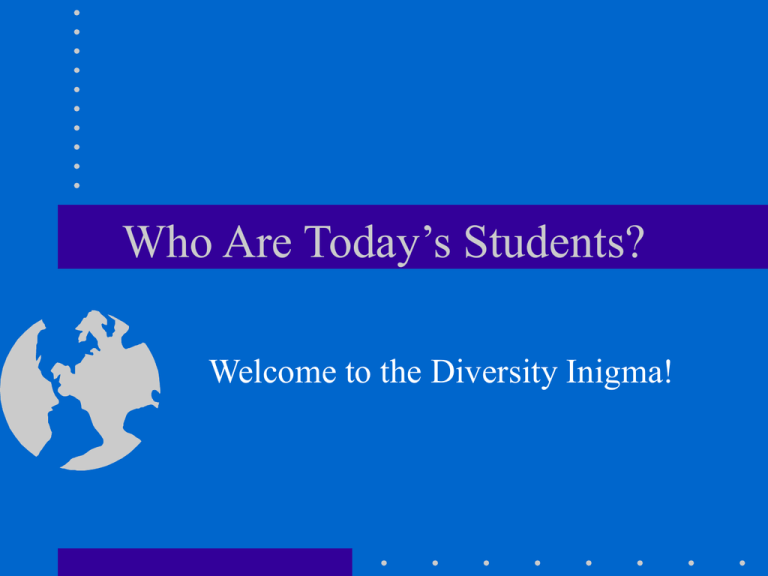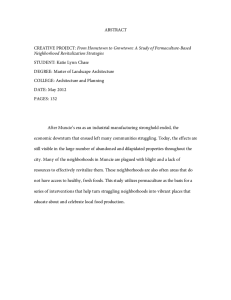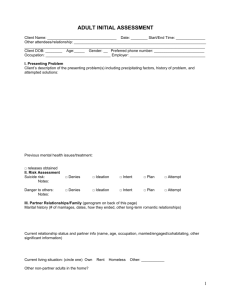Who Are Today’s Students? Welcome to the Diversity Inigma!
advertisement

Who Are Today’s Students? Welcome to the Diversity Inigma! Cultural Diversity • Cultural Pluralism • “Melting Pot” philosophy • By the year 2010, the four states of California, Texas, New York, and Florida will have more than one-third of the nation’s young people • Youth population will be > 52 percent minority Diverse needs • Students from different family patterns • Glasser’s fundamental needs: • • • • • Survival Love and belonging Power Freedom Fun Maslow’s Needs Hierarchy • • • • • • • Self-actualization Needs Aesthetic Needs Need to know and understand Esteem needs Belongness and Love needs Safety Needs Physiological Needs Multiple Intelligences • • • • • • • Linguistic Musical Logical-mathematical Spatial Bodily-kinesthetic Interpersonal Intrapersonal Learning Styles • Visual • Auditory • Kinesthetic-Tactile Students with Disabilities • Mentally retarded • Learning Disabled • Orthopedically impaired • Emotionally Disturbed • Hearing Impaired • Visually Impaired • • • • • Speech Traumatic head injury Autistic Other health impaired Multiply impaired Giftedness • • • • “Gifted and talented” or simply gifted? Acceleration Enrichment Acceleration includes grade skipping, advanced placement tests, early college admission • Enrichment can include learning centers, learning contracts, learning packets, mentors, community resources Characteristics of Social Classes • Source: Macionis, J. J., (1991). Sociology, 3rd ed. Englewood Cliffs, N. J.: PrenticeHall. Pp. 262-264. Upper class • Income is $100, 000 + • Occupations are corporate, professional, family money • Education=prestigious colleges and professional schools • Political power at all levels • Homeownership=at least one home • Health coverage is full • Full access to community resources • Neighborhoods are exclusive or comfortable • Send children to college easily Middle class • $40, 000 - $100,000 income • White-collar or skilled blue collar occupations • Education is high school, college, or professional school • Usually own home • Health coverage is usually full • Access to most community services • Comfortable neighborhoods • Usually can send children to college • P. Power is state or local Working class • Income $12,000 to $40,000 • Blue-collar jobs • Education is high school • About 1/2 own a home • Limited health coverage • Some access to community resources • Modest neighborhoods • Seldom have ability to send children to college • Limited political power Lower class • Income less than $12, 000 in 1991 dollars • Jobs are minimum wage unskilled labor • Education is high school or less • No home ownership • No health coverage • Little access to community resources • Deteriorating neighborhoods • No ability to send children to college • No significant political power Cultural differences • Color: the main color difference in the United States is GREEN • Socio-economic status predicts much more in terms of student achievement than skin color) Other noticeable cultural differences • Perception of time-time’s importance, punctuality, wasting time, keeping time • Visiting distance--12 inches or 4 feet? • Treatment of those who are older--sages or more experienced buddies? Other cultural differences (2) • Differences in literalness or idiomatic speech. How much deep structure? • Self determination-self determined or fatalistic? • Attitudes towards exceptionalities • Treatment of women Bilingual Education • Transitional model is associated with traditional bilingual instruction • Immersion model features a bilingual teacher but English-only is spoken • Submersion model is “sink-or-swim” English Inclusion • • • • • Least restrictive environment Mainstreaming Regular Education Initiative Inclusion Full Inclusion Teachers, then, today will need to accommodate a variety of learning styles and capabilities. This will be necessary for the schools to accomplish their mission.



